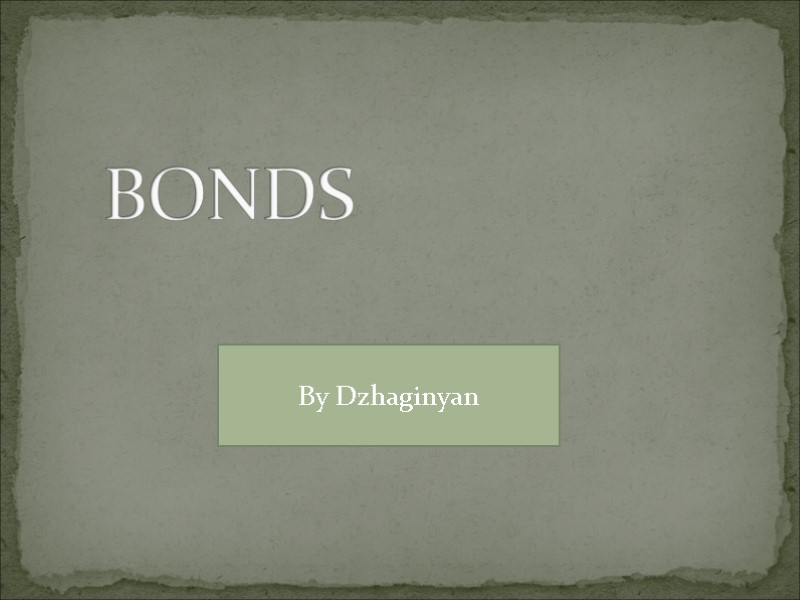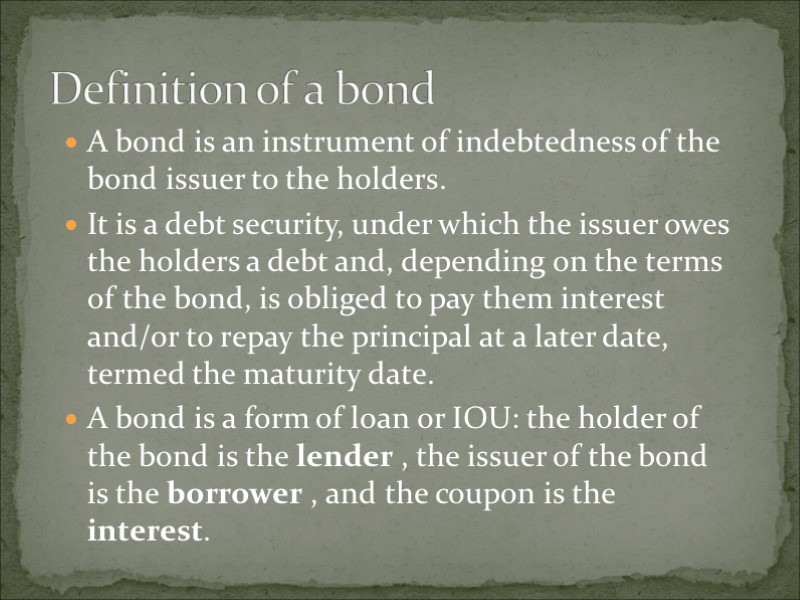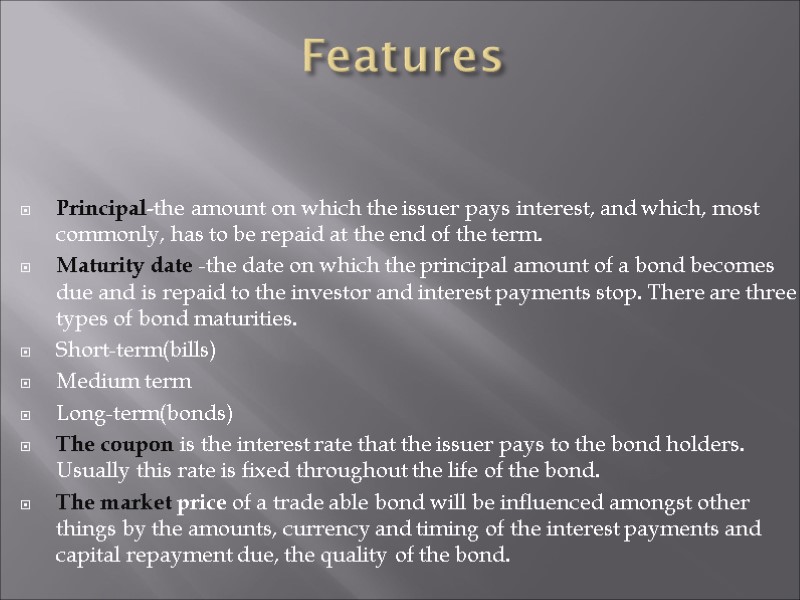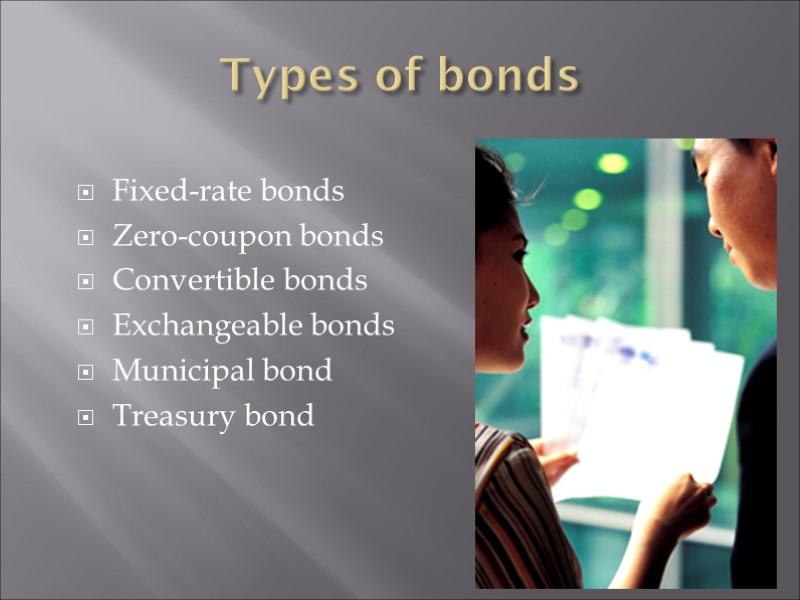BONDS By Dzhaginyan A bond is an instrument


BONDS By Dzhaginyan

A bond is an instrument of indebtedness of the bond issuer to the holders. It is a debt security, under which the issuer owes the holders a debt and, depending on the terms of the bond, is obliged to pay them interest and/or to repay the principal at a later date, termed the maturity date. A bond is a form of loan or IOU: the holder of the bond is the lender , the issuer of the bond is the borrower , and the coupon is the interest. Definition of a bond

Issuance of bonds Bonds are issued by public authorities and credit institutions. The most common process of issuing bonds is underwriting. Government bonds are issued on the auction. An alternative process is the private placement bond, when bonds are sold directly to buyers.

Features Principal-the amount on which the issuer pays interest, and which, most commonly, has to be repaid at the end of the term. Maturity date -the date on which the principal amount of a bond becomes due and is repaid to the investor and interest payments stop. There are three types of bond maturities. Short-term(bills) Medium term Long-term(bonds) The coupon is the interest rate that the issuer pays to the bond holders. Usually this rate is fixed throughout the life of the bond. The market price of a trade able bond will be influenced amongst other things by the amounts, currency and timing of the interest payments and capital repayment due, the quality of the bond.

Types of bonds Fixed-rate bonds Zero-coupon bonds Convertible bonds Exchangeable bonds Municipal bond Treasury bond

Foreign currencies Many companies, banks, governments and other sovereign entities may decide to issue bonds in foreign currencies. Issuers have ability to access investment capital available in foreign markets. The proceeds from issuance of these bonds can be used by companies to break into foreign markets. Foreign issuer bonds can also be used to hedge foreign exchange rate risk.

Valuation of the bonds depends on many factors : current market interest rates, the length of the term and the creditworthiness of the issuer. The market price of a bond if the present value of all expected future interest. The interest rate divided by the current price of the bond is called the current yield (this is the nominal yield multiplied by the par value and divided by the price) Bond valuation

Investing in bonds Bonds are bought and traded mostly by central banks, sovereign wealth funds, pension funds, insurance companies, hedge funds and banks. The volatility of bonds is lower than that of equities (stocks). It means that investing in bonds may be less risky than investments in stocks. Bonds are also subject to various other risks such as prepayment risk, credit risk, reinvestment risk, liquidity risk, event risk, exchange rate risk, volatility risk, inflation risk, sovereign risk and yield curve risk.

THANKS FOR YOUR ATTENTION
37760-bonds[1].ppt
- Количество слайдов: 9

